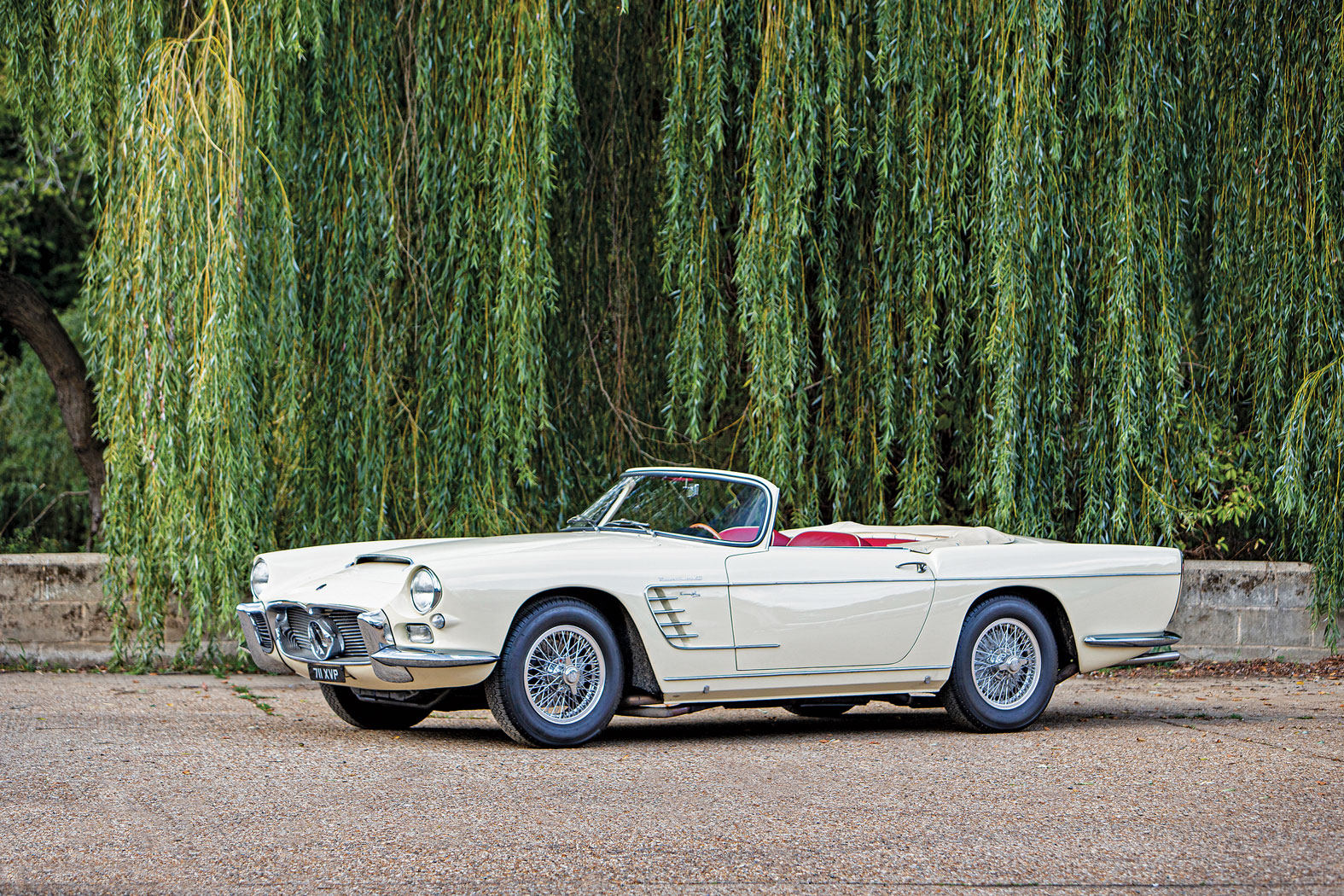Ahead of Maserati’s official unveiling of the 3500 GT, the Italian manufacturer instructed a small cluster of trusted carrozzeria to design bodywork to clothe the newly designed rolling chassis. Five unbodied chassis were sent to the Turin-based coachbuilder Pietro Frua, who returned with completed cars with his usual exuberance and attention to detail. Of these, only the car shown here, chassis number AM101268, was styled as an open Spyder. Fascinating design features, such as the headlights set into gently rising wings, cleverly disguised side-mounted air intakes dressed in chrome, and flared tail fins punctuated a truly unique shape.
The styling of chassis AM101268, envisioned in 1958, was reportedly a pitch for the 3500 GT Spyder. While that contract would eventually be awarded to Vignale, this unique car laid the foundations for future Frua designs that dressed the later 5000 GT. Few road-going concept Maseratis had such far-reaching influence, and the legacy would live on with hints of future models, such as the Mexico and Sebring, evident in this car’s appearance.
The fifth owner, Bruno Bouvier of Evreux, bought the car in 1981 and commissioned a full restoration, which would include a new 3500 GT engine acquired from the Maserati factory. Restoration work was continued by the next owner, Peter Garett of Kent, at Glendale Engineering of Oldham. The Maserati was finished in the striking color scheme of pastel yellow with a turquoise-and-white leather interior and included the desirable factory upgrades of a 5-speed gearbox and disc brakes.
Subsequent caretakers included the noted collector Ben Huisman and the renowned Maserati enthusiast Alfredo Brener. Mr. Brener is said to have renewed some of the restoration work between 1998 and 2000, with new Cream paint, and it appeared at the 2000 Concorso Italiano and 2002 Los Angeles Auto Show. The consigning owner acquired this Maserati via auction in 2020.

